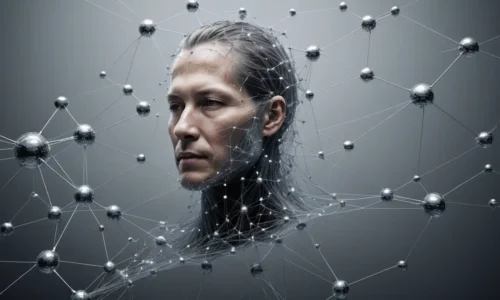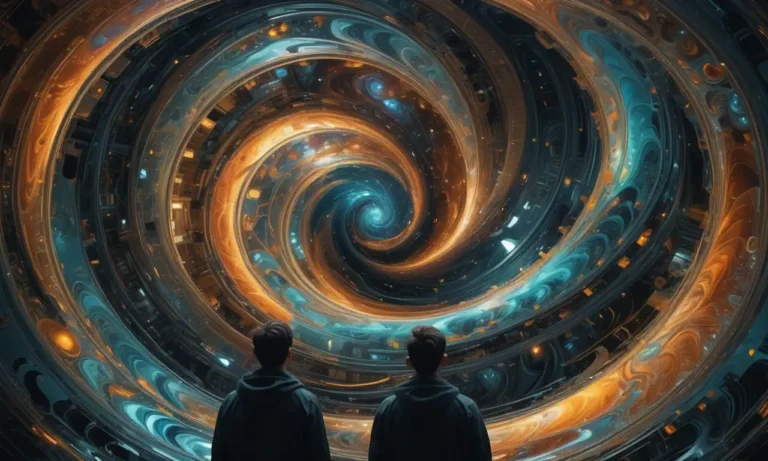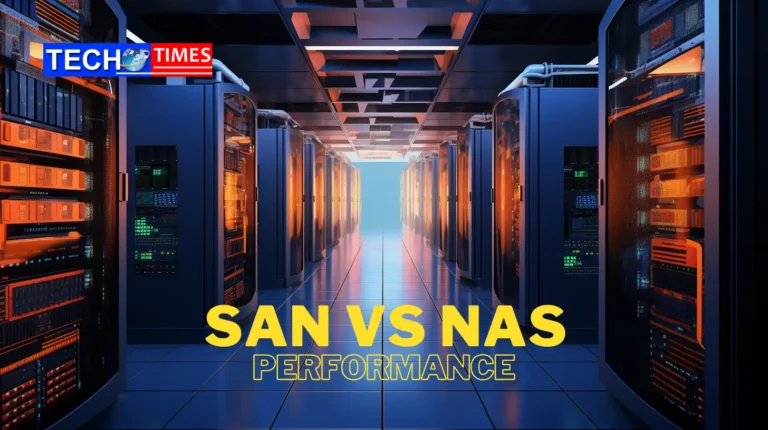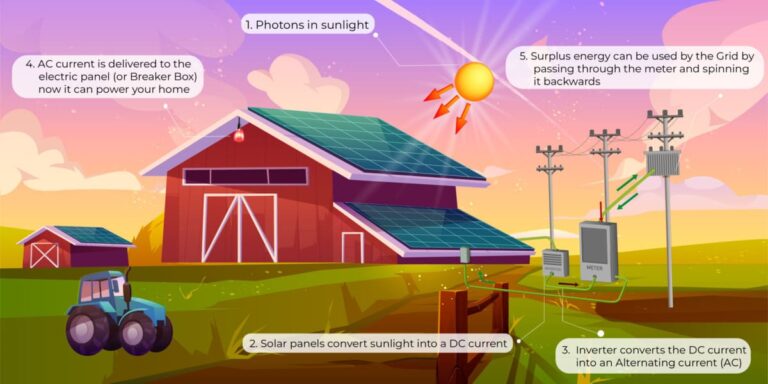A Beginner’s Guide to AI Image Generation: Creating Stunning Visuals with AI Tools
I. Introduction:
In today’s digital age, visuals are more important than ever. They capture attention, convey messages, and drive engagement across various platforms. But creating high-quality visuals can be time-consuming, expensive, and require specialized skills. This is where AI image generation comes in, revolutionizing the way we create and interact with visual content.
AI image generation is a cutting-edge technology that uses artificial intelligence to create images from scratch, based on text descriptions or other input. It’s like having a digital artist at your fingertips, capable of bringing your imagination to life in stunning detail.
This technology has opened up a world of possibilities for individuals and businesses alike. Whether you’re a marketer looking to create eye-catching ads, a content creator seeking unique visuals for your blog, or simply someone who wants to explore their creative side, AI image generation can empower you to produce amazing visuals without any prior artistic experience.
This article is a beginner’s guide to AI image generation. It’s designed for anyone who wants to learn about this exciting technology and how to use it to create stunning visuals. We’ll cover the basics of how AI image generation works, explore some of the most popular AI image generation tools, and provide tips and tricks for creating high-quality images that will impress your audience.
By the end of this article, you’ll have a solid understanding of AI image generation and be well on your way to creating your own stunning visuals. So, let’s dive in and explore the exciting world of AI image generation!
II. How AI Image Generation Works

AI image generation is a fascinating field that combines computer science, mathematics, and art. At its core, it relies on complex algorithms and models that have been trained on vast amounts of data. Here’s a simplified explanation of how it works:
Generative Models:
The heart of AI image generation lies in generative models. These models are designed to learn the underlying patterns and structures of images, allowing them to generate new images that resemble the data they were trained on. Two popular types of generative models are:
- Generative Adversarial Networks (GANs): GANs consist of two neural networks, a generator and a discriminator, that compete against each other. The generator tries to create realistic images, while the discriminator tries to distinguish between real images and those generated by the generator. Through this adversarial process, both networks improve, leading to the generation of increasingly realistic images.
- Diffusion Models: Diffusion models work by gradually adding noise to an image until it becomes pure noise. Then, they learn to reverse this process, gradually removing the noise to generate an image. These models have shown impressive results in generating high-quality and diverse images.
Algorithms and Approaches:
Several algorithms and approaches are used in AI image generation, including:
- Deep Learning: Deep learning, a subfield of machine learning, plays a crucial role in AI image generation. Deep neural networks, with their multiple layers, can learn complex patterns and representations of images.
- Convolutional Neural Networks (CNNs): CNNs are particularly well-suited for image processing tasks. They can extract features from images and learn spatial relationships between different parts of an image.
- Transformers: Transformers, originally developed for natural language processing, have also found applications in image generation. They can capture long-range dependencies in images and generate coherent and consistent visuals.
The Process of AI Image Generation:
The process of generating images with AI typically involves the following steps:
- Data Collection and Training: A large dataset of images is collected and used to train the generative model. The model learns the underlying patterns and structures of the images in the dataset.
- Input Prompt: The user provides an input prompt, which can be a text description, an image, or a combination of both. The prompt guides the AI model in generating the desired image.
- Image Generation: The AI model uses the input prompt and its learned knowledge to generate a new image. The model iteratively refines the image until it matches the desired characteristics.
- Output Image: The AI model outputs the generated image, which can then be used for various purposes.
The Magic Behind the Scenes:
While the technical details can be complex, the basic idea is that AI image generation models learn to map input prompts to corresponding images. They do this by learning the statistical relationships between words and images in the training data. When given a new prompt, the model can use this knowledge to generate an image that is likely to be associated with that prompt.
The field of AI image generation is rapidly evolving, with new models and techniques being developed all the time. As these technologies continue to advance, we can expect even more impressive and realistic AI-generated images in the future.
III. Exploring Popular AI Image Generation Tools

The world of AI image generation is constantly evolving, with new tools and platforms emerging regularly. Here are some of the most popular and powerful AI image generation tools available today:
DALL-E 3:
Developed by OpenAI, DALL-E 3 is the latest iteration of their groundbreaking AI image generation model. It boasts significant improvements in generating images from natural language descriptions, producing even more realistic, detailed, and creative visuals. DALL-E 3 excels at understanding complex prompts and generating images that accurately reflect the user’s intent.
- Key Features:
- Enhanced ability to generate images from complex and nuanced prompts.
- Improved image quality and realism.
- Greater control over image details and composition.
- Integration with other OpenAI tools and services.
- Pros:
- Exceptional image quality, creativity, and adherence to prompts.
- User-friendly interface.
- Active community support.
- Cons:
- Limited access (waitlist).
- Relatively expensive compared to some other tools.
Midjourney:
Midjourney remains a popular AI image generation tool known for its artistic and dreamlike style. It continues to evolve and offer new features, making it a strong contender in the AI art generation space.
- Key Features:
- Generates images in a variety of artistic styles.
- Easy to use through a Discord server.
- Active and supportive community.
- Pros:
- Excellent for generating artistic and imaginative images.
- Relatively affordable.
- Fast generation speed.
- Cons:
- Requires a Discord account.
- Limited control over image details compared to DALL-E 3.
Stable Diffusion:
Stable Diffusion, with its open-source nature and high customizability, continues to be a favorite among users who want greater control over the image generation process. Its flexibility and extensibility make it a powerful tool for advanced users and developers.
- Key Features:
- Open-source and highly customizable.
- Can be run locally on personal computers.
- Supports various plugins and extensions.
- Pros:
- Free and open-source.
- Highly customizable and flexible.
- Large and active community.
- Cons:
- Requires technical knowledge to set up and use.
- Can be resource-intensive for complex image generation.
Whisk (Google):
Whisk is an innovative AI image generation tool from Google that takes a different approach to creating visuals. Instead of relying solely on text prompts, Whisk allows users to generate images using existing images as input. This “remixing” approach opens up new possibilities for creative exploration and visual ideation.
- Key Features:
- Generates images using existing images as prompts.
- Allows users to define the subject, scene, and style of the generated image.
- Can be combined with text prompts for further customization.
- Pros:
- Unique and intuitive approach to image generation.
- Facilitates creative exploration and visual remixing.
- Powered by Google’s Gemini AI and Imagen models.
- Cons:
- Relatively new tool with potentially limited features compared to more established platforms.
- Access may be limited depending on location and availability.
Other Popular Tools:
Besides the ones mentioned above, several other AI image generation tools are worth exploring, including:
- DeepAI: Offers various AI tools for image generation, editing, and enhancement.
- Artbreeder: Allows users to “breed” images together to create new and unique visuals.
- NightCafe Creator: Provides various AI art generation methods and styles.
Choosing the Right Tool:
The best AI image generation tool for you will depend on your specific needs, budget, and technical expertise.
- Beginners: If you’re just starting, DALL-E 3 or Midjourney are excellent options due to their user-friendly interfaces and high-quality results.
- Advanced Users: If you have technical skills and want more control over the image generation process, Stable Diffusion is a great choice due to its open-source nature and customizability.
- Budget-conscious Users: Stable Diffusion is a free and open-source option, while Midjourney offers relatively affordable subscription plans.
- Creative Explorers: If you’re looking for a unique and intuitive way to generate images, Whisk’s image-based prompting might be the perfect tool for you.
No matter which tool you choose, remember that practice and experimentation are key to mastering AI image generation. Try different prompts, explore various settings, and don’t be afraid to push the boundaries of creativity.
IV. Tips and Tricks for Creating Stunning Visuals
AI image generation is a powerful tool, but like any tool, it requires practice and skill to master. Here are some tips and tricks to help you create stunning visuals with AI image generation:
Crafting Effective Prompts:
The key to getting the results you want from AI image generation tools lies in crafting effective prompts. A well-written prompt can make all the difference in the quality and relevance of the generated image. Here are some tips for writing great prompts:
- Be Specific: The more specific you are in your prompt, the better the AI will understand what you want. Instead of saying “a dog,” try “a golden retriever puppy playing fetch in a park at sunset.”
- Use Descriptive Language: Use vivid and descriptive language to paint a picture in the AI’s mind. Include details about the subject, setting, style, and mood you want to convey.
- Experiment with Keywords: Try different keywords and phrases to see how they affect the generated image. You might be surprised at the results you get.
- Specify Art Styles: If you have a particular art style in mind, include it in your prompt. For example, “a portrait of a woman in the style of Van Gogh” or “a landscape painting in the style of Impressionism.”
- Use References: If you have a specific image in mind, you can use it as a reference for the AI. Some tools allow you to upload images and use them as a starting point for generating new visuals.
Fine-tuning Your Images:
Most AI image generation tools offer various settings and parameters that you can adjust to fine-tune your images. Here are some things to consider:
- Aspect Ratio: Choose the appropriate aspect ratio for your image (e.g., square, landscape, portrait).
- Image Resolution: Select the desired resolution for your image. Higher resolutions will result in more detailed and sharper visuals.
- Iterations: Adjust the number of iterations the AI performs during the image generation process. More iterations can lead to higher quality images but may also take longer.
- Seed: Use a specific seed value to generate the same image repeatedly. This can be useful for experimenting with different settings or variations.
Experimenting and Learning:
The best way to improve your AI image generation skills is to experiment and learn from your experiences. Try different prompts, explore various settings, and don’t be afraid to push the boundaries of creativity.
- Practice Regularly: The more you use AI image generation tools, the better you will become at crafting effective prompts and fine-tuning your images.
- Explore Different Tools: Try different AI image generation tools to see which ones you like best and which ones are best suited for your needs.
- Join Online Communities: Connect with other AI image generation enthusiasts online to share tips, learn from each other, and stay up-to-date on the latest trends.
Beyond the Basics:
As you become more comfortable with AI image generation, you can explore more advanced techniques, such as:
- Combining AI-generated Images with Other Tools: You can use AI-generated images as a starting point and then further edit and enhance them using other image editing software.
- Creating AI-generated Art: AI image generation can be used to create unique and imaginative artwork.
- Using AI for Commercial Purposes: You can use AI-generated images for marketing materials, website design, and other commercial applications.
By following these tips and tricks, you can create stunning visuals with AI image generation and unlock the full potential of this exciting technology.
Звичайно, ось текст для розділів “Ethical Considerations and Copyright Issues” та “The Future of AI Image Generation”, створений на основі вашого промту:
V. Ethical Considerations and Copyright Issues
AI image generation, while offering incredible creative potential, also raises important ethical and legal questions. As this technology becomes more prevalent, it’s crucial to consider the following:
- Authorship and Ownership: Who owns the copyright to an image generated by AI? Is it the user who provided the prompt, the AI developer, or the AI itself? This is a complex issue with no easy answers, and legal frameworks are still evolving to address it.
- Use of Existing Images: AI models are trained on vast datasets of existing images, raising concerns about copyright infringement and the use of artists’ work without their consent.
- Potential for Misuse: AI image generation can be used to create deepfakes, manipulate images, and spread misinformation. It’s essential to be aware of these potential abuses and to use this technology responsibly.
- Bias and Representation: AI models can inherit biases from the data they are trained on, leading to the generation of images that perpetuate stereotypes or exclude certain groups. It’s important to address these biases and ensure that AI-generated images are fair and inclusive.
Copyright and AI-Generated Images:
The legal status of AI-generated images is still a gray area. In many jurisdictions, copyright law protects human creations, but it’s unclear whether this protection extends to images generated by AI. Some argue that the user who provided the prompt should own the copyright, while others believe that the AI developer or the AI itself should be considered the creator.
The lack of clear legal guidelines can create uncertainty and potential risks for those who use AI-generated images commercially. It’s crucial to stay informed about the evolving legal landscape and to seek legal advice if you plan to use AI-generated images for business purposes.
VI. The Future of AI Image Generation

The field of AI image generation is rapidly advancing, with new models, techniques, and tools being developed at an astonishing pace. Here are some exciting possibilities for the future of AI image generation:
- Enhanced Realism and Creativity: AI models will continue to improve in their ability to generate even more realistic, detailed, and creative images. We can expect to see AI-generated images that are indistinguishable from photographs or traditional artwork.
- Interactive Image Generation: Imagine being able to interact with AI models in real time, providing feedback and making adjustments to the generated images as you go. This could revolutionize the creative process and allow for greater artistic control.
- AI-Powered Design Tools: AI image generation could be integrated into design tools, allowing users to easily create custom visuals for websites, marketing materials, and other projects.
- New Forms of Art and Expression: AI image generation opens up new avenues for artistic expression, allowing artists to explore new styles, techniques, and mediums.
- AI-Generated Content for Entertainment: AI could be used to generate entire worlds, characters, and stories for video games, movies, and other forms of entertainment.
The Impact on Visual Content and Creativity:
AI image generation has the potential to transform the way we create and interact with visual content. It empowers individuals and businesses to produce high-quality visuals without requiring specialized skills or expensive resources. This democratization of visual content creation can lead to a more diverse and vibrant visual landscape.
AI image generation also challenges traditional notions of creativity and authorship. As AI models become more sophisticated, they may blur the lines between human and machine creativity, raising questions about the role of the artist and the nature of art itself.
Despite these challenges, AI image generation offers tremendous potential for innovation, creativity, and communication. By embracing this technology responsibly and ethically, we can unlock its full potential and create a future where stunning visuals are accessible to everyone.
VII. Conclusion
AI image generation is a transformative technology that is rapidly changing the way we create and interact with visuals. It empowers individuals and businesses to produce stunning images without requiring specialized skills or expensive resources. From marketing and advertising to art and entertainment, AI image generation has a wide range of applications and the potential to revolutionize various industries.
In this article, we’ve explored the basics of AI image generation, discussed popular tools like DALL-E 3, Midjourney, Stable Diffusion, and Whisk, and provided tips and tricks for creating high-quality visuals. We’ve also touched on the ethical considerations and copyright issues surrounding this technology, as well as the exciting possibilities for the future of AI image generation.
As AI image generation continues to evolve, it’s crucial to stay informed about the latest advancements and to experiment with new tools and techniques. The key to success in this field lies in continuous learning, practice, and a willingness to explore the endless creative possibilities that AI has to offer.
So, whether you’re a seasoned artist or a curious beginner, we encourage you to dive into the world of AI image generation and unleash your creativity. With the right tools and a little imagination, you can create stunning visuals that will captivate your audience and bring your ideas to life.
VIII. Frequently Asked Questions (FAQ)
Here are some frequently asked questions about AI image generation:
-
What are the best AI image generation tools for beginners?
For beginners, DALL-E 3 and Midjourney are excellent options due to their intuitive interfaces and high-quality results. Whisk can also be an interesting tool for beginners, as it offers a unique approach to image generation using existing images as prompts.
-
How can I learn to write effective text prompts?
Learning to write effective prompts is key to success in AI image generation. Here are some tips:
- Be specific and use descriptive language.
- Experiment with different keywords and phrases.
- Specify the desired style, mood, and artistic direction.
- Use references to specific images or artists, if possible.
- Work with different tools and platforms to see how they interpret your prompts.
-
Are there any free AI image generation tools available?
Yes, Stable Diffusion is a free and open-source tool that can be installed and used on your computer. However, this may require some technical skills and resources.
-
What ethical considerations should I keep in mind when creating images with AI?
It’s important to be mindful of ethical issues such as authorship, the use of other people’s images, potential misuse, bias, and representation. Always ensure that you use AI-generated images responsibly and respectfully.
-
How can I use AI-generated images for commercial purposes?
The use of AI-generated images for commercial purposes depends on the licensing terms of the specific tool or platform. Always check the license and terms of use to make sure you can use the images for your needs.
5 Key Factors for Choosing the Right AI Tools for Your Business



